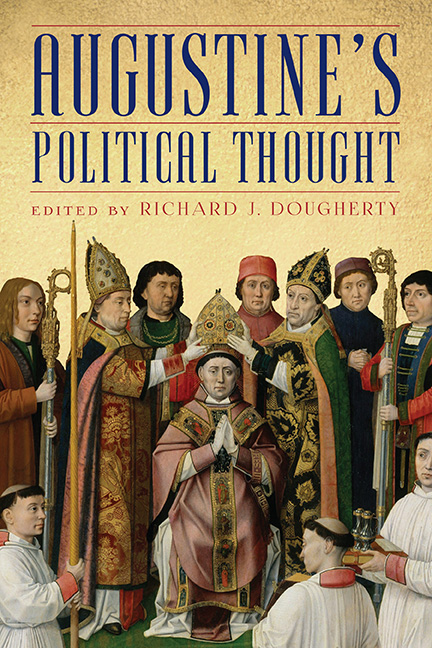Book contents
- Frontmatter
- Contents
- Acknowledgments
- Introduction
- Part 1 Politics, Nature, and Virtue
- Part 2 St. Augustine and Ancient Political Philosophy
- 6 The Few, the Many, and the Universal Way of Salvation: Augustine's Point of Engagement with Platonic Political Thought
- 7 Echoes and Adaptations in Augustine's Confessions of Plato's Teaching on Art and Politics in the Republic
- 8 Truth, Lies, Deception, Esotericism: The Case of St. Augustine
- 9 Augustine's Ciceronian Response to the Ciceronian Patriot
- 10 Augustine's City of God and Roman Sacral Politics
- 11 Augustine and Platonic Political Philosophy: The Contribution of Joseph Ratzinger
- Notes on Contributors
- Index
7 - Echoes and Adaptations in Augustine's Confessions of Plato's Teaching on Art and Politics in the Republic
from Part 2 - St. Augustine and Ancient Political Philosophy
Published online by Cambridge University Press: 26 June 2019
- Frontmatter
- Contents
- Acknowledgments
- Introduction
- Part 1 Politics, Nature, and Virtue
- Part 2 St. Augustine and Ancient Political Philosophy
- 6 The Few, the Many, and the Universal Way of Salvation: Augustine's Point of Engagement with Platonic Political Thought
- 7 Echoes and Adaptations in Augustine's Confessions of Plato's Teaching on Art and Politics in the Republic
- 8 Truth, Lies, Deception, Esotericism: The Case of St. Augustine
- 9 Augustine's Ciceronian Response to the Ciceronian Patriot
- 10 Augustine's City of God and Roman Sacral Politics
- 11 Augustine and Platonic Political Philosophy: The Contribution of Joseph Ratzinger
- Notes on Contributors
- Index
Summary
In his Republic, Plato examines the political implications of art by means of an analysis of the nature and structure of the human soul. Because the soul has “parts”that usually exist in tension with each other, the soul usually finds itself in a disharmonious condition; in other words, the soul is usually bad or unjust. The artist, the Republic teaches, has the power to reproduce this injustice or discord within the souls of an audience by depicting it in a manner that the audience—antecedently inclined toward injustice anyway—finds attractive. The artist accomplishes this effect by presenting an imitation of a disharmonious soul to the audience; the audience then willingly imitates the imitation. Art thereby functions, as it were, as a photocopying machine for reproducing multiple unjust souls within a city. Because of this power it has to distort souls, poetic art is banned from the city being constructed in speech in the early books of the Republic; it is permitted back into the city, however, late in the work, when Plato seems to concede that art can be reformed under the influence of philosophy and even put in the service of justice or psychic concord. Indeed, the Republic concludes with an extended example of this reformed art—art in the service of the soul and the city—namely, the myth of Er.
This essay will argue that Augustine's Confessions echoes and adapts aspects of Plato's thought on art and politics as it is expressed in the Republic. In its first and second sections, this essay will show how the initial book of the Confessions offers a criticism of art that proceeds along the same lines as the early books of the Republic, linking art and politics especially through the tripartite structure of the soul. Whereas Plato executes his critique primarily through an analysis of Homer, the first section of this essay will show how Augustine does this, especially through a critique of Terence and Virgil in Confessions, book 1. The second section will develop Augustine's criticism in book 1 by sifting evidence from books 3 and 4. In its third, fourth, and fifth sections, the essay will turn to book 1's “mirror image” in book 9 and show how, again echoing Plato, Augustine concedes that art can be reformed.
- Type
- Chapter
- Information
- Augustine's Political Thought , pp. 152 - 172Publisher: Boydell & BrewerPrint publication year: 2019



